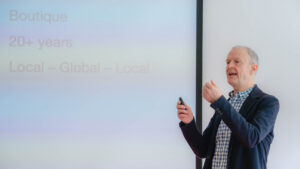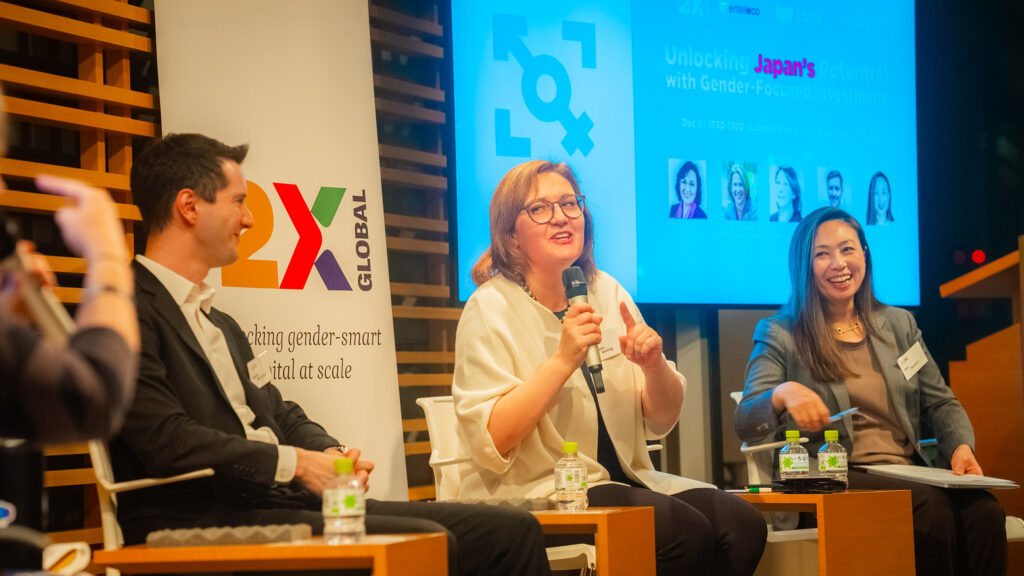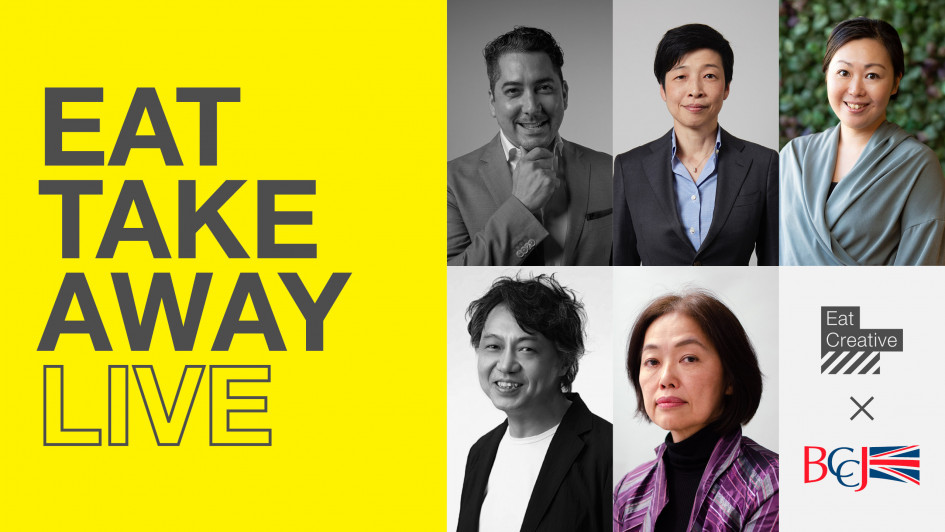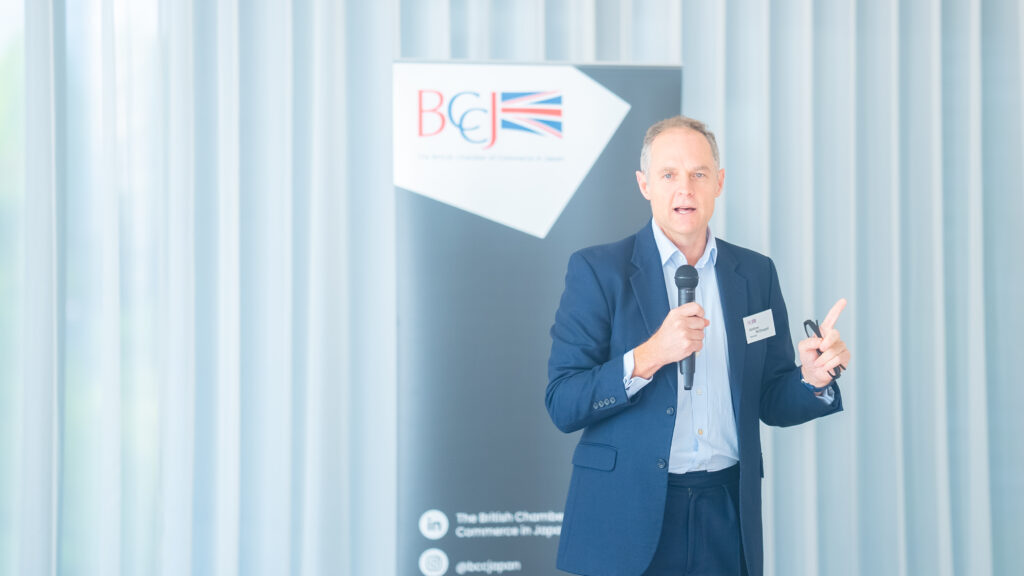Member? Please login
Using your brand to power your business in Japan

Written by BCCJ
October 25, 2023
Past Event Round Ups
Building the brand of an organisation can aid differentiation from competitors, boost loyalty from customers and enhance employee performance through clarity of purpose, thereby increasing profitability and the likelihood of long-term success.
But brand strategy, design and successful implementation can pose difficulties amid misalignment, miscommunication or misunderstanding on goals, decision-making and plans to harness the brand in the long-term. And the work is even harder, perhaps, for micro, small and medium-sized enterprises with limited resources such as money, time, talent and technology.
So, how can businesses step up to the challenge of using their brand to better power their operations? This was the question posed by branding and communications company Eat Creative at a workshop hosted by the British Chamber of Commerce in Japan in mid-October.
Founded in 2000, the boutique firm has teams in Tokyo, Hong Kong and Seoul working across sectors to develop brands in the Asia-Pacific region. Specialties include the hospitality, automotive, F&B, finance and medical/pharmaceutical sectors.
Steve Martin, co-founder and executive creative director, opened the session by introducing how Eat Creative works with clients “to become more relevant in the markets they are targeting.” Clients typically fall into two categories: international firms entering Asia or Japan that seek to localise and Japanese firms looking to overseas markets for growth. In both scenarios, Eat Creative’s goal is the same, said Martin, “to deliver real-world results, working with clients to do things that will make their bottom line better.”
Eat Creative takes a four-stage approach in its work with clients, he continued. First, they pose questions about the client’s activities, business culture, challenges and competitors. The next step is to create a tailored brand positioning strategy that defines “the unique, ownable space for the brand in that market.” Next comes the communications elements. In many cases this focuses on transcreation—rather than simply translation—of design and content, which ensures “what is translated is relevant for the appropriate culture,” shared Martin. Finally, Eat Creative executes marketing, which tends to be carried out over several years or across multiple projects, allowing staff to build on their knowledge base of the client.
Branding at the core
Robert Costelloe, head of growth, introduced why branding matters. “Branding is about more than a logo, tagline or campaign. It is the fundamental heart of your business,” he said, adding that it should therefore “connect every function and operational element” of the business.
“Branding is not something that can be developed in isolation,” he added, noting that a firm’s purpose, identity, values and ambitions are all integral to the brand sitting at the core of operations.
Feeding into this core are four areas of activity: business strategy (knowing how and where to make money in the market), experience (delivering on what is promised to customers, employees and stakeholders), products and services (offering something the market wants and needs) and marketing (reaching the right people in the right way, both internally and externally).
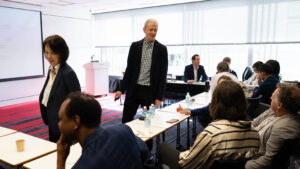
Benefits of branding
“Brand-lens thinking helps with long-lens thinking,” said Costelloe, pointing out that a strong brand drives business performance and helps staff work towards common goals.
External benefits include recognition, differentiation from the competition, the ability to attract and retain new customers and employees, greater loyalty of existing customers and partners, as well as clarity of value among stakeholders, he continued.
Internally, branding can be used as a filter for decision-making on everything from the firm’s purpose and story, to short and long-term goals. It can even increase efficiency by reducing time lost through the revision of inconsistent or inadequate work and act as a motivator for staff by increasing productivity and engagement.
Costelloe pointed to various studies that demonstrate how branding can aid firms’ bottom line. For example, presenting a brand consistently across platforms can increase revenues by up to 23% due to increased recognition and consideration, according to global public opinion and data company YouGov. This trend is due to audiences seeing the same markers and definitions over time, allowing them to build up familiarity with the organisation, he explained.
Firms in the S&P 500, a stock market index tracking the stock market performance of 500 of the largest companies listed on stock exchanges in the United States, also attributed more than 30% of their stock market value to their brands, according to The Economist.
Businesses with distinctive brand assets, meanwhile, are strongly linked to positive audience attention, with mentions 34% higher than non-distinctive brand assets, according to a survey by Ipsos, a global market research and public opinion specialist.
Overcoming challenges
In an interactive session conducted under the Chatham House Rule, participants and Eat Creative staff discussed four of the main challenges businesses face when building a brand for clients, namely: brand execution in the midst of local, regional and global teams; external partner relationships, particularly in the case of the combination of an overseas brand, an importer, a distributor and a sales outlet; an unclear partner hierarchy which can make it challenging to get direct, definitive decision-making; and a disconnect, particularly from a brand perspective, between the skills and knowledge of employees and the roles they hold.
Summing up the discussion, Costelloe suggested attendees define common objectives and goals; identify opportunities to stand out using their brand, especially for smaller businesses; prioritise consensus-building, even if it takes time; and identify an internal “brand champion” who can drive the development of the brand both internally and externally.
Martin, in closing, shared that Eat Creative’s experience in building brands has revealed the need for all stakeholders to listen before agreeing what success would look like for each person, keeping in mind that culture shapes the criteria for success. Furthermore, all involved should aim to find a common language and focus on solutions, rather than the processes required to achieve them.
“It sounds trite, but it works,” he concluded.
